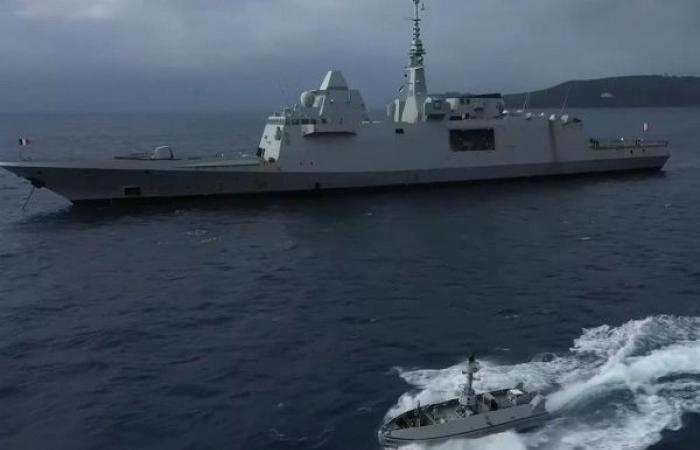
In a recent article, the daily Le Monde estimated that naval drones were now “decisive weapons” for naval combat. And to support his point by citing the successes obtained by the Ukrainian forces against the Russian Black Sea fleet thanks, in part, to the use of such remotely piloted boats. If Russia was indeed forced to withdraw some of its ships from the port of Sevastopol [Crimée] and that Ukraine, although lacking a navy worthy of the name, was able to keep open a corridor necessary for the export of its cereals, the reality is a little more complicated.
First, not all Russian ships damaged and/or sunk by the Ukrainians were targeted by surface drones. So, for example, the cruiser Moskva, the flagship of the Black Sea Fleet, was sent to the bottom by Neptune anti-ship missiles. Same thing for the submarine Rostov-on-Don, hit by SCALP EG / Storm Shadow cruise missiles while in dry dock in Sevastopol.
Then, and apart from these two “emblematic” units, the Russian navy nevertheless managed to preserve its ships equipped with land-strike capabilities and, as frigate captain François-Olivier Corman points out in the pages of the magazine Conflits, to “maintain control of priority maritime areas for its supplies, such as the Sea of Azov”.
And the co-author of the naval strategy treatise “Winning at Sea in the 21st Century” notes that “the tonnage of Russian ships destroyed or damaged”, for the most part “close to expiry by Western standards, “barely equal” that of Ukrainian ships destroyed by Russia since 2014. Also, he believes, the “match is therefore a draw […] or at least its outcome is less unequal than we would like to believe”, which “forces us to question the effectiveness of the Ukrainian strategy”.
Clearly, it is still too early to say that the “naval guerrilla warfare” practiced by the Ukrainians will allow them to win the battle of the Black Sea.
The Chief of Staff of the French Navy, Admiral Nicolas Vaujour, shares this observation. “It is at sea that Ukraine has achieved most of its achievements. This is due to the excellence of its engineers and sailors, their ability to adapt and use technologies to their advantage. This tactic has been particularly effective in a closed sea, the Black Sea, where disruptive capabilities can produce maximum effect. The asymmetrical balance of power has turned, at sea, to the advantage of the Ukrainians. But Russian power is still expressed at the back of the court[t] : it is its strategic depth in a gigantic territory or in the immensity of the Atlantic Ocean”, he explained, in an interview relayed by the Institute of Advanced National Defense Studies [IHEDN].
However, if, for the moment, they do not alone make the decision, naval drones – surface or submarine – will be essential in the future, whether to give “mass” to a naval force or to carry out specific tasks [lutte anti-sous-marine, guerre des mines, renseignement, etc.].
In the meantime, and while the Military Programming Law [LPM] 2024-30 provides an envelope of 5 billion euros for “drones and robots”, the French Navy has not specified its intentions in terms of surface drones [USV]. For the moment, she is focusing on the SLAM-F program [Système de lutte anti-mines marines du futur] as well as on the UCUV underwater drone demonstrator project [Unmanned Combat Underwater Vehicles]entrusted to Naval Group.
But no doubt she is waiting to see… In any case, she had the opportunity to test the USV SeaQuest S, which Naval Group officially presented at the Euronaval 2024 show. Indeed, according to the industrialist, this surface drone was recently “successfully tested” with a multi-mission frigate [FREMM] of the National Navy.
Designed by Sirenha, a subsidiary of Naval Group, in partnership with the Couach-CNC shipyard, the SeaQuest S is the head of a range of surface drones dedicated to collaborative combat. Measuring 9 meters long and 3 meters wide, it can be equipped with different payloads depending on the missions it will have to carry out. [reconnaissance, ciblage, guerre électronique, surveillance maritime, lutte ASM, etc.]. Being able to operate alone or in swarms, it is able to navigate in difficult sea conditions.
“The Seaquest S was successfully embarked aboard a French Navy frigate. Modularity and flexibility were confirmed: reconnaissance, escort, port protection and logistics. A concept for anti-submarine warfare and against swarms of drones is being studied,” summarized Naval Group, via the social network naval forces”.
That said, one of the concerns with USVs is that they are likely to be quickly “outdated” technologically. “In Ukraine, we move from one version to another every six months”, notably “because the adversary is putting in place defenses” to counter them, recently summarized Pierre-Antoine Fliche, a manager at Naval Group. , in the pages of Defense News. “This is one of the reasons we designed the SeaQuest as a highly modular platform […] because we know that USVs evolve on a cycle of six to nine months,” he concluded.





